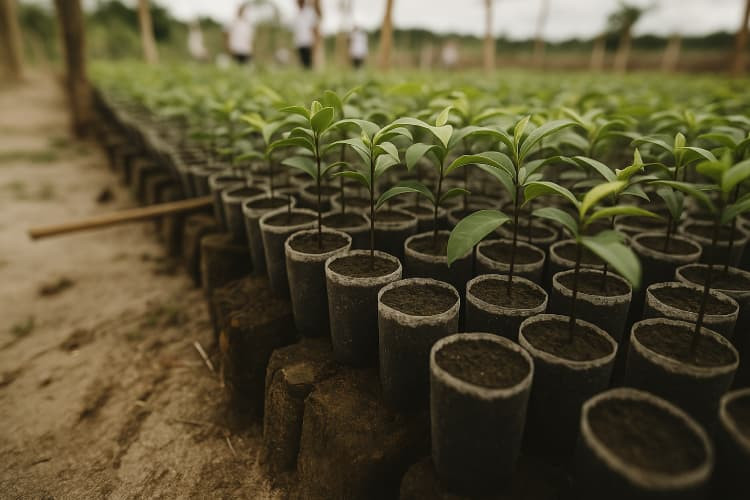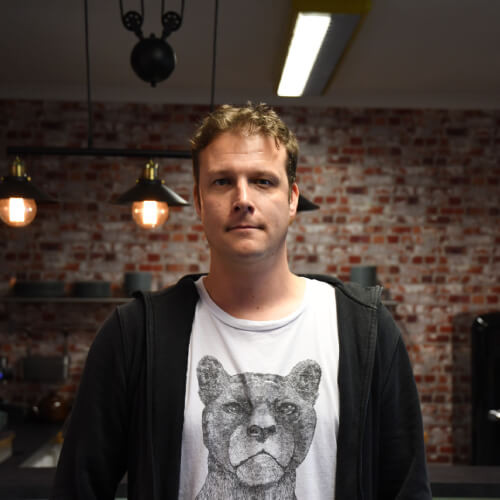Waldom Electronics 2025 Sustainability Impact Report Released
In The News | 30-07-2025 | By Matthew Walker

Key Things to Know:
- Waldom Electronics’ 2025 initiative has planted the equivalent of 2,625 tennis courts of trees across Kenya, Tanzania, and Brazil.
- The program has generated 1,116 workdays and driven a 706% increase in access to nutrition for local communities.
- Its carbon offset is equivalent to removing 27,861 cars from the road for a year, making it a model for industry-scale emissions reduction.
- Through its Green Stock Program, Waldom has repurposed over 8 billion components, reinforcing its leadership in circular supply chain practices.
In 2025, Waldom Electronics has taken a bold step forward in aligning electronics distribution with environmental regeneration. Building on its legacy as a supply chain innovator, the company’s latest video release reveals the measurable outcomes of its ambitious global tree-planting initiative, one that is reshaping how sustainability is practiced within the electronics industry.
Now operating across diverse ecosystems, from coastal Kenya to the Brazilian rainforest, Waldom’s tree-planting campaign has yielded extraordinary results:
- The equivalent of 2,625 tennis courts worth of trees planted
- 1,116 workdays created for local communities
- Carbon offset equivalent to removing 27,861 cars from the road for a full year
While such achievements are impressive, they also underscore a deeper strategic shift in the role of electronic components distributors. Traditionally, sustainability has been a downstream concern, left to OEMs or manufacturers, but Waldom is redefining what upstream responsibility looks like. By taking environmental accountability into the heart of supply chain logistics, the company is setting a precedent for proactive ESG engagement across the industry.
The electronics sector has long been challenged by a significant carbon footprint, particularly in logistics and inventory management. Waldom’s initiative directly addresses this through a scalable, data-driven partnership with Veritree, a leading platform in restorative land-use technologies. Veritree’s verification tools allow Waldom to track and quantify reforestation impact with scientific precision, ensuring that the effort is not only symbolic but truly systemic.
As electronics distributors look for credible ways to meet growing regulatory and consumer pressure around sustainability, Waldom’s environmental blueprint offers both a roadmap and a rallying cry. This is more than planting trees; it’s about planting the future of responsible electronics.
From Circuit Boards to Community Roots: Socioeconomic Impact in Action
Waldom’s 2025 tree-planting initiative extends well beyond environmental metrics; it’s deeply rooted in local economic development and community resilience. With project sites spanning Qual and Mombasa in Kenya, Tanga in Tanzania, Kadugu and Sagal, and Marina in Brazil, the program covers a diverse geographical footprint. Each region presents unique environmental and socioeconomic challenges, but Waldom’s approach has been consistent: create regenerative solutions that benefit people as much as the planet.
This isn’t sustainability as a distant corporate goal; it’s boots-on-the-ground impact. Across all sites, the initiative has generated 1,116 workdays for local communities, directly contributing to income security, skill development, and economic inclusion. In parallel, the program has led to a 706% increase in access to nutrition, showing how reforestation projects can drive food security and resilience in regions often overlooked by global supply chains.
These results map directly to several United Nations Sustainable Development Goals (SDGs), particularly:
- Goal 8: Decent Work and Economic Growth
- Goal 12: Responsible Consumption and Production
- Goal 13: Climate Action
- Goal 15: Life on Land
In many ways, Waldom is engineering social equity into the same systems that power global electronics infrastructure. By choosing locations that are often left behind in industrial development conversations, the company is bringing visibility and investment to underserved regions. These are not token projects; they are structured, measurable interventions that align business success with human development.
For an industry steeped in precision and innovation, this model of environmental equity offers a new blueprint, one where solutions are engineered not just for components, but for communities.
The Tech Industry’s Carbon Equation: Offsetting at Scale
One of the standout figures in Waldom Electronics’ 2025 sustainability campaign is the carbon offset equivalent of removing 27,861 cars from the road for an entire year. In environmental engineering terms, this is a substantial mitigation effort, especially for a company operating within the high-velocity, high-emissions world of electronics distribution. It signals not just a symbolic gesture, but a measurable dent in the industry’s carbon equation.
Compared to standard sustainability benchmarks across supply chain operations, Waldom’s offset scale places it among the most proactive players in the sector. While many companies are still conducting materiality assessments or publishing aspirational ESG reports, Waldom has taken definitive action and backed it with data. This sets a new bar for what carbon responsibility can look like in electronics logistics.
But Waldom’s impact isn’t limited to forestry. A cornerstone of its sustainability approach lies in its Green Stock Program, a circular inventory strategy that has already repurposed more than 8 billion electronic components that would otherwise have ended up in landfills. By managing distributor stock rotations and reducing scrap allowances, the program embodies a true closed-loop model, blending environmental foresight with operational efficiency.
This dual-pronged strategy, carbon offset through reforestation and material recovery through circular inventory, demonstrates how sustainability can be embedded directly into distribution frameworks. Rather than being tacked on as a compliance requirement, green practices are being woven into Waldom’s core logistics model. This represents a vital shift in how legacy systems can evolve to meet modern environmental standards.
With increasing pressure on OEMs and component manufacturers to show scope 3 emissions reductions, Waldom’s proactive stance could influence supplier strategies across the electronics ecosystem. As the industry grapples with building sustainability into fast-moving, globalized supply chains, Waldom is showing that it’s possible to bridge the gap between legacy logistics and low-impact innovation, at scale.
Looking Forward: Tree-By-Tree Toward a Resilient Supply Chain
Waldom Electronics’ 2025 sustainability campaign is not a one-off initiative; it’s part of a long-term strategy that positions environmental responsibility as a foundational pillar of the company’s identity. As CEO Don Akery put it, “We believe sustainability isn’t a buzzword, it’s a responsibility.” This sentiment encapsulates the ethos behind Waldom’s actions: building impact that’s not just visible, but durable.
Tree planting, in this context, is more than a climate solution; it’s a metaphor for resilience. By investing in regenerative ecosystems, Waldom is not only offsetting emissions but strengthening the long-term stability of its own supply chain. Forests, like distribution networks, thrive on redundancy, adaptation, and time. This alignment between environmental and logistical resilience signals a new direction for how infrastructure is conceived in the electronics space.
Looking ahead, the industry faces mounting expectations from carbon markets, compliance frameworks, and ESG reporting bodies. Distributors will increasingly be called upon to prove their contributions to emissions reductions, circularity, and community engagement. Waldom’s early leadership gives it a head start in this new regulatory and reputational landscape, offering a model others can adopt or build upon.
There is a clear call to action here: for electronics manufacturers, component suppliers, and logistics providers to integrate sustainability into the DNA of their operations. Whether through verifiable carbon offsets, waste diversion programs, or community investment, the opportunity to lead is open, but the time to act is now.
Waldom’s latest impact video provides a vivid look at what scalable, measurable sustainability looks like in practice. As the electronics industry navigates its transition toward more resilient, low-impact operations, Waldom’s tree-by-tree approach reminds us that lasting change is built incrementally, with roots in both purpose and performance.

